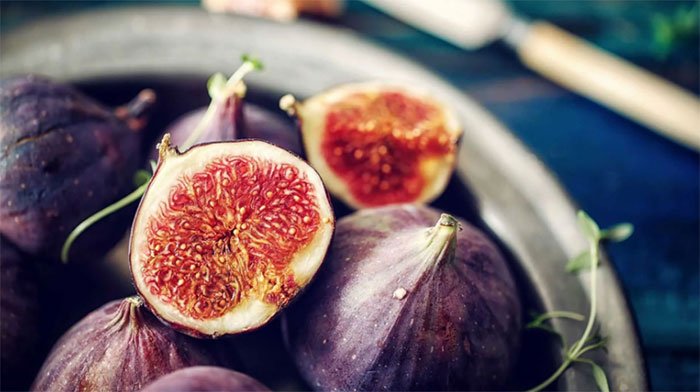Are there insects in the figs we eat?
Are insects really dead in figs? You can hear rumors, and it turns out that (sometimes) it's true. But when you learn about the whole relationship between figs and insects, you will find something unexpected.
This is what you need to know
Before we study this, let's start with a little plant lesson. Figs do not flower like apple trees or cherry trees. Figs are not even defined as fruit plants; they are inverted flowers. The meat we eat is actually a bunch of small flowers growing inside.
Because the fig flowers bloom inside, they are not pollinated by bees or wind. They use insects to do this job.Figs and wasps exist through biological relationships called reciprocal relationships . Put simply, insects and flowers need each other to survive.

Because the fig flower blooms inside, the same worm will help the fig pollinate.
The process of fertilization takes place as follows : A female insect infects male fig flowers to lay eggs through a small passage. The path is very small, the female insect's wings burst. So once the insect has entered, there is no way out.
Then it lays its eggs inside the figs. The male insects have the double duty of breeding with females and digging tunnels for the females to escape from the figs. The females then leave the figs - their birthplace along with the pollen to find another figs to nest. And the cycle continues.
We don't eat male figs. We get figs when a female insect carries pollen and accidentally makes a nest in a female fig. It pollinates flowers and figs inside. Remember, when an insect has lost its beard and its wings are doomed to die in the heart of figs and we get delicious figs from this.
Why is figs safe?
Figs contain the enzyme ficin, which breaks down female exoskeleton . When you eat a pollinated fig through reciprocity, you are also eating insects. But they are very small, usually only about 1.5 mm long. So if you get a few enzyme-free insects with fruit, then it's not really significant when comparing it to the content in other foods.
The foods you usually eat are probably more insects in hoppy beer than in your figs. According to Science American, the FDA limit for aphids in hops is 2,500 aphids per 10 grams of hops, or about 5% of the total weight of hops.
Figs in the United States
To make you more comfortable, it's worth noting that most fig trees grown in the U.S. are self-pollinating, so they may not have exoskeleton. You can thank the science for that when you enjoy the figs at your cocktail party and share this story.
- Things to know when eating figs
- Technique of planting and tending ornamental fruit trees
- Techniques to plant and care for ornamental figs
- Sung - the oldest agricultural crop of mankind?
- Insect-eating insects like to eat
- Set of brilliant photos showing off
- 'Huge' figs caused a stir in Hanoi
- Assassin insects in nature
- What will happen if insects disappear from Earth?
- How do insects keep their bodies warm?
- Insects also 'love' gay
- FAO calls for investment in growing insects for food
- More than 1 million species of insects on Earth but this is the reason they are
- Nutritional value in insects comparable to beef
 Why do potatoes have eyes?
Why do potatoes have eyes? 'Tragedy' the world's largest carnivorous life: Death becomes ... public toilet
'Tragedy' the world's largest carnivorous life: Death becomes ... public toilet Tomatoes were once considered 'poisonous' for 200 years
Tomatoes were once considered 'poisonous' for 200 years Detecting microscopic parasites on human face
Detecting microscopic parasites on human face